Silane PEGs allow for efficient functionalization of silica (SiO2) and related surfaces. Typically, the functionalization of silica, known as silanization, begins with APTES and involves multiple steps to produce the desired functionality. However, with methoxy, azide, alkyne, and biotin functionalities, our silane PEGs greatly reduces the steps required to create the desired functionality.
Selected Research:Methoxy PEG Silane (Cat No. 26069-26072) improves selectivity of magnetic nanoparticles used in visualization of tumors.
Larsen, E. K., Nielsen, T. W., Birkedal, H., Vorup-Jensen, T., Østergaard, L., Horsmon, M. R., et al. (2009). Size-Dependent Accumulation of PEGylated Silane-Coated Magnetic Iron Oxide Nanoparticles in Murine Tumors. ACS Nano, 3(7), 1947-1951.
Methoxy PEG Silane and Silane PEG Biotin (Cat No. 26236-26239) create nanoaperture array for single-molecule fluorescence microscopy.
Kinz-Thompson, C. D., Palma, M., Pulukkunat, D. K., Chenet, D., Hone, J., Wind, S. J., et al. (2013). Robustly Passivated, Gold Nanoaperture Arrays for Single-Molecule Fluorescence Microscopy. ACS Nano, 7(9), 8158-8166.
Silane PEG Biotin binds to DNA-protein complex and allows for study of DNA conformations.
Shemer, G., Atsmon, Y., Karzbrun, E., & Bar-Ziv, R. H. (2012). Collective Conformations of DNA Polymers Assembled on Surface Density Gradients. Journal of the American Chemical Society, 134(9), 3954-3956.
-
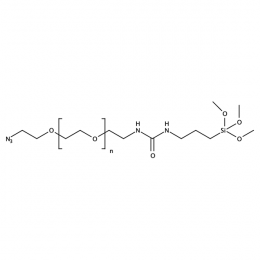 Silane PEG azide, MP 20000Catalog Number 26235
Silane PEG azide, MP 20000Catalog Number 26235 -
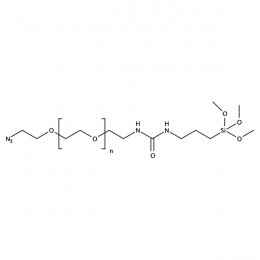 Silane PEG azide, MP 10000Catalog Number 26234
Silane PEG azide, MP 10000Catalog Number 26234 -
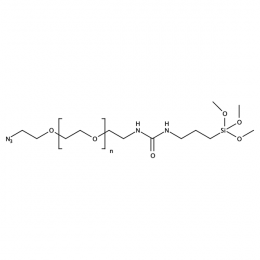 Silane PEG azide, MP 5000Catalog Number 26233
Silane PEG azide, MP 5000Catalog Number 26233 -
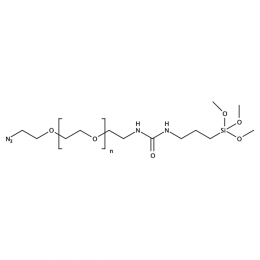 Silane PEG azide, MP 3000Catalog Number 26232
Silane PEG azide, MP 3000Catalog Number 26232 -
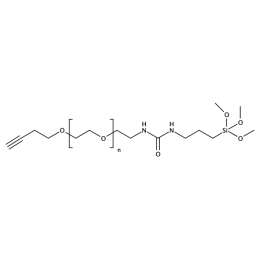 Silane PEG alkyne, MP 20000Catalog Number 26231
Silane PEG alkyne, MP 20000Catalog Number 26231 -
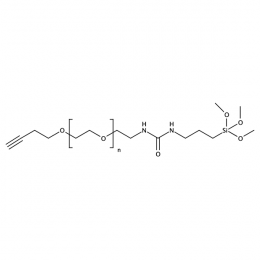 Silane PEG alkyne, MP 10000Catalog Number 26230
Silane PEG alkyne, MP 10000Catalog Number 26230 -
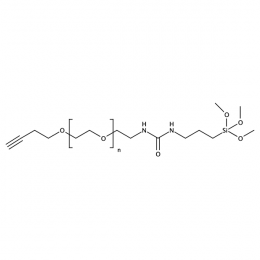 Silane PEG alkyne, MP 5000Catalog Number 26229
Silane PEG alkyne, MP 5000Catalog Number 26229 -
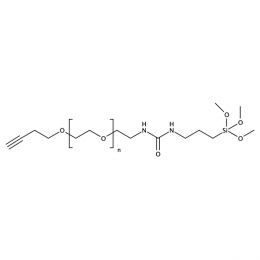 Silane PEG alkyne, MP 3000Catalog Number 26228
Silane PEG alkyne, MP 3000Catalog Number 26228 -
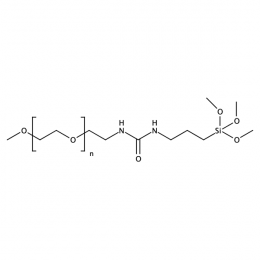 Methoxy PEG silane, Mp 2000Catalog Number 26069
Methoxy PEG silane, Mp 2000Catalog Number 26069 -
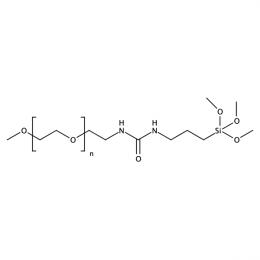 Methoxy PEG silane, Mp 5000Catalog Number 26070
Methoxy PEG silane, Mp 5000Catalog Number 26070 -
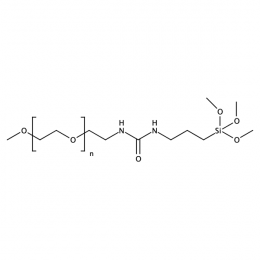 Methoxy PEG silane, Mp 10000Catalog Number 26071
Methoxy PEG silane, Mp 10000Catalog Number 26071 -
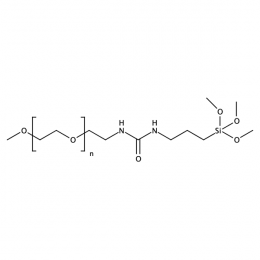 Methoxy PEG silane, Mp 20000Catalog Number 26072
Methoxy PEG silane, Mp 20000Catalog Number 26072
